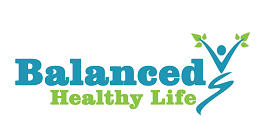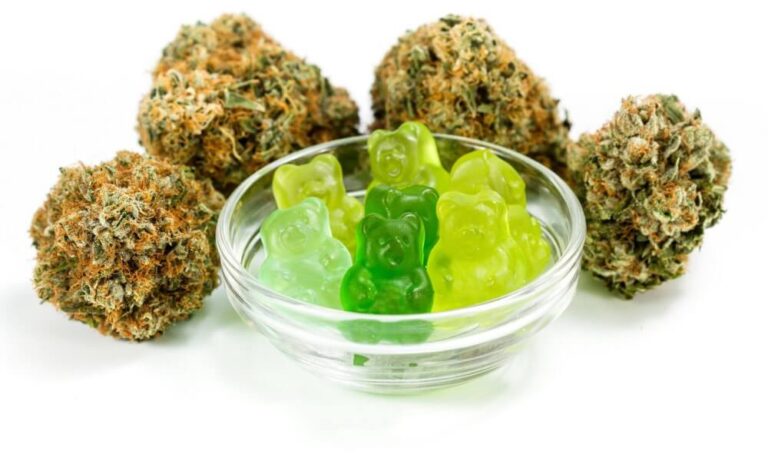
Medications are only one method of lowering blood pressure. Consider other possibilities such as exercise, potassium, dark chocolate, better sleep, and garlic. Also, identify items to avoid, such as sugar and alcohol.
Hypertension (high blood pressure) is known as the “silent killer” for good reason. It frequently has no symptoms but poses a significant risk of heart disease and stroke.
The measurement of your blood pressure is in millimeters of mercury, abbreviated as mm Hg. The measurement is comprised of two numbers:
Systolic blood pressure:
The top number shows the power of the pressure created by your heart as it pushes blood into the arteries throughout your body.
Diastolic blood pressure:
This is the pressure in your blood vessels between beats, while your heart is filling and relaxing.
Your blood pressure is determined by the amount of blood your heart pumps and the amount of resistance to blood flow in your arteries. Your blood pressure rises when your arteries thin.
A blood pressure reading of less than 120/80 mm Hg is considered normal. A blood pressure of 130/80 mm Hg or higher is considered high.
If your results are higher than normal but less than 130/80 mm Hg, you have raised blood pressure. This indicates that you are at risk of getting high blood pressure.
If you get an abnormal reading, you must visit a cardiology hospital to get evaluated.
The good news about high blood pressure is that you can make changes to drastically lower your levels and risk without using drugs.
Here are 17 proven methods for lowering your blood pressure.
- Increase physical activity and exercise.
According to a meta-analysis of 65 research, aerobic and resistance exercise can considerably lower blood pressure, particularly in males.
Sedentary older individuals who engaged in aerobic exercise training reduced their blood pressure by an average of 3.9 percent systolic and 4.5 percent diastolic in a 2013 study. These outcomes are comparable to several blood pressure medicines.
As you boost your heart and breathing rates on a regular basis, your heart becomes stronger and pumps with less effort. This reduces artery pressure and so lowers blood pressure.
How much physical activity should you aim for?
The American College of Cardiology and the American Heart Association recommend 40-minute sessions of moderate- to vigorous-intensity physical activity three to four times per week, according to a 2019 research.
If finding 40 minutes at a time is difficult, the time can be broken into three or four 10- to 15-minute segments throughout the day.
However, you do not need to run marathons. Increasing your level of activity can be as simple as:
- Walking more often
- gardening and doing housework
- going for a bike ride
- participating in a team sport
Simply do it on a regular basis and work up to at least half an hour of moderate activity per day.
Tai chi is an example of a moderate activity that can yield significant results. A 2017 assessment of the effects of tai chi on high blood pressure found that it reduced systolic blood pressure by 15.6 mm Hg and diastolic blood pressure by 10.7 mm Hg when compared to no exercise at all.
A 2014 assessment of exercise and blood pressure indicated that there are numerous workout combinations that can lower blood pressure.
Among these exercises are:
- resistance training aerobic exercise
- Interval training at high intensity
- short bouts of exercise throughout the day
- walking 10,000 steps a day
Ongoing research indicates that even light physical activity can be beneficial, particularly for older persons.
- If you are overweight, you should lose weight.
Losing 5 to 10 pounds if you’re overweight will help lower your blood pressure. You’ll also reduce your chances of developing additional medical issues.
According to a meta-analysis of many research, weight loss regimens decreased blood pressure by an average of 3.2 mm Hg diastolic and 4.5 mm Hg systolic.
- Reduce your intake of sugar and refined carbohydrates.
Many studies have shown that limiting your intake of sugar and refined carbs will help you lose weight and lower your blood pressure.
According to one 2014 study, sugar, particularly fructose, may raise blood pressure more than salt. Sugar increased blood pressure by 5.6 mm Hg diastolic and 6.9 mm Hg systolic in trials lasting at least 8 weeks.
A 2020 study comparing various common diets discovered that for persons who were overweight or obese, low carb and low fat diets reduced diastolic blood pressure by about 5 mm Hg and systolic blood pressure by about 3 mm Hg after 6 months.
Another advantage of a low carbohydrate, low sugar diet is that you feel fuller for longer since you consume more protein and fat.
- Consume more potassium while consuming less sodium.
Increasing your potassium intake and reducing your salt intake can also help lower your blood pressure.
Potassium is a two-for-one winner since it reduces the effects of salt in your system while also relieving blood vessel stress. Potassium-rich meals, on the other hand, may be detrimental to persons with kidney illness, so consult a cardiologist before increasing your potassium consumption.
It is simple to consume more potassium. Potassium is naturally abundant in many foods. Here are a few examples:
- low-fat dairy foods like milk and yoghurt
- fish
- fruits like bananas, apricots, avocados, and oranges
- vegetables like sweet potatoes, potatoes, tomatoes, greens, and spinach.
It’s worth noting that everyone reacts differently to salt.
Some people are salt-sensitive, which means that consuming more salt raises their blood pressure. Others are salt-intolerant. They can consume a lot of salt and expel it in their urine without having high blood pressure.
The DASH (Dietary Approaches to Stop Hypertension) diet is recommended by the National Institutes of Health for lowering salt intake. The DASH diet focuses on:
- foods with low sodium
- Low-fat dairy products and fruits and veggies
- complete grains
- fish \poultry \beans
- less sugar and red meat
- Consume fewer processed foods
The majority of the extra salt in your diet comes from processed meals and restaurant dishes, not from your salt shaker at home. Popular salty foods include:
- meats from delis
- Soup and pizza chips
- other prepared snacks
To compensate for the lack of fat, foods labelled “low fat” are typically rich in salt and sugar. Fat provides meals with flavour and makes you feel full.
Cutting back on — or better still, eliminating — processed foods will help you consume less salt, sugar, and refined carbohydrates. All of this can lead to a drop in blood pressure.
Make it a habit to read nutrition labels. A salt content of 5% or less on a product label is considered low, whereas a content of 20% or more is deemed high, according to the Food and Drug Administration (FDA).
- Quit smoking
It may be challenging, but it is worthwhile: quitting smoking is good for your overall health. When you smoke, your blood pressure and heart rate rise immediately but only temporarily.
Tobacco compounds can raise blood pressure in the long run by weakening blood vessel walls, producing inflammation, and constricting arteries. High blood pressure is caused by hardened arteries.
Even if you are exposed to secondhand smoke, the toxins in tobacco can harm your blood vessels.
Nonsmokers who could go to smoke-free restaurants, bars, and workplaces had lower blood pressure than nonsmokers in locations where there were no smoke-free policies impacting public places, according to one study.
- Reducing excessive stress
We live in tense times. Workplace and family pressures, as well as national and international politics, all contribute to stress. It is critical for your health and blood pressure to find measures to lessen your personal stress.
There are numerous methods for successfully relieving stress, so choose what works best for you. Deep breathing exercises, a walk, a book, or a comedy film can all help.
Daily music listening has also been demonstrated to lower systolic blood pressure.
A 20-year study found that regular sauna use lowered the risk of dying from heart disease.
A small study published in 2015 found that acupuncture can reduce both systolic and diastolic blood pressure.
- Experiment with meditation or yoga
Mindfulness and meditation, especially transcendental meditation, have long been used — and researched — as stress-reduction techniques.
Yoga, which often entails breathing control, posture, and meditation practises, can also help to reduce stress and blood pressure.
When compared to those who did not exercise, a 2013 evaluation of yoga and blood pressure reported an average blood pressure decline of 3.62 mm Hg diastolic and 4.17 mm Hg systolic.
Yoga routines that incorporated breath control, postures, and meditation were nearly twice as successful as those that did not include all three parts.
- Consume some dark chocolate
Yes, chocolate fans: Blood pressure can be reduced by eating dark chocolate.
However, dark chocolate should include 60 to 70% cacao. According to a review of dark chocolate studies, eating one to two squares of dark chocolate per day may help reduce the risk of heart disease by decreasing blood pressure and inflammation.
The flavonoids present in chocolate with higher cocoa solids are thought to provide the benefits. Flavonoids aid in the dilation, or widening, of your blood vessels.
- Investigate these medicinal plants
Herbal medicines have long been used in various cultures to treat a wide range of ailments.
Some herbs have even been shown to have the ability to lower blood pressure. More research, however, is required to establish the most effective doses and plant components.
Before taking herbal supplements, always consult your doctor or pharmacist. They could cause problems with your prescription drugs.
Here is a partial list of plants and herbs used to decrease blood pressure by cultures all over the world:
- black bean (Castanospermum australe)
- cat’s claw (Uncaria rhynchophylla)
- celery juice (Apium graveolens)
- Chinese hawthorn (Crataegus pinnatifida)
- ginger root
- giant dodder (Cuscuta reflexa)
- Indian plantago (blond psyllium)
- maritime pine bark (Pinus pinaster)
- river lily (Crinum glaucum)
- roselle (Hibiscus sabdariffa)
- sesame oil (Sesamum indicum)
- tomato extract (Lycopersicon esculentum)
- tea (Camellia sinensis), especially green tea and oolong tea
- umbrella tree bark (Musanga cecropioides)
- Get enough restorative sleep.
When you sleep, your blood pressure usually drops. Sleep deprivation can have an impact on your blood pressure.
People who are sleep deprived, particularly those in their forties and fifties, are at a higher risk of developing high blood pressure.
Getting a decent night’s sleep might be difficult for some people. Here are a few suggestions to help you obtain a good night’s sleep:
- Set a consistent sleeping pattern.
- Spend some time relaxing before going to bed.
- Work out during the day.
- Daytime naps should be avoided.
- Marine pine bark, river lily (Pinus pinaster) (Crinum glaucum)
- Make your bedroom a haven.
According to the 2010 National Sleep Heart Health Study, sleeping less than 7 hours per night and more than 9 hours per night was related with an elevated risk of high blood pressure.
Sleeping less than 5 hours per night on a regular basis was connected to a significant risk of long-term high blood pressure.
- Consume garlic or supplement with garlic extract
Both fresh garlic and garlic extract are commonly used to decrease blood pressure.
A meta-analysis discovered that garlic supplements decreased systolic blood pressure by up to 5 mm Hg and diastolic blood pressure by up to 2.5 mm Hg in persons with high blood pressure.
A time-release garlic extract product may have a larger effect on blood pressure than ordinary garlic powder tablets, according to a 2009 clinical research.
- Consume high-protein foods
A long-term study completed in 2014 discovered that people who consumed more protein had a lower risk of developing high blood pressure. Those who consumed an average of 100 grams of protein per day had a 40% lower chance of having high blood pressure than those who followed a low protein diet.
Those who also added regular fibre into their diet saw up to a 60 percent reduction of risk.
However, a high protein diet may not be for everyone. Those with kidney disease may need to use caution. It’s best to talk with your doctor.
It’s fairly easy to consume 100 grams of protein daily on most types of diets.
High protein foods include:
- fish, such as salmon or canned tuna in water
- eggs
- poultry, such as chicken breast
- beef
- beans and legumes, such as kidney beans and lentils
- nuts or nut butter, such as peanut butter
- chickpeas
- cheese, such as cheddar
A 3.5-ounce portion of salmon may have up to 22 grams of protein, but a 3.5-ounce dish of chicken breast may contain up to 30 grams.
A half-cup serving of most types of beans delivers 7 to 10 grams of protein for vegetarians. 8 grams would be provided by two tablespoons of peanut butter.
- Use these blood pressure supplements
These supplements are widely available and have shown promise in terms of decreasing blood pressure:
Polyunsaturated fatty acid omega-3
Including omega-3 polyunsaturated fatty acids or fish oil in your diet can provide numerous advantages.
A meta-analysis of fish oil and blood pressure discovered a 4.5 mm Hg systolic and 3.0 mm Hg diastolic blood pressure drop in persons with high blood pressure.
Protein derived from whey
This milk protein complex may have various health benefits, including perhaps decreasing blood pressure.
Magnesium
Magnesium insufficiency is linked to elevated blood pressure. A meta-analysis discovered that magnesium supplementation reduced blood pressure somewhat.
Citrulline
Oral L-citrulline is a precursor of L-arginine, a protein building block that may reduce blood pressure.
- Consume less alcohol
Even if you’re in good health, alcohol can elevate your blood pressure.
It is critical to drink in moderation. Alcohol can elevate your blood pressure by 1 mm Hg for every 10 grams drunk, according to a 2006 study. A normal drink has 14 grams of alcohol in it.
What exactly is a normal drink? One 12-ounce beer, five ounces of wine, or one and a half ounces of distilled liquor.
Moderate drinking limits women to one drink per day and men to two drinks per day.
Although ingesting more than 30 grams of alcohol initially lowers blood pressure, after 13 hours or more, systolic blood pressure rises by 3.7 mm Hg and diastolic blood pressure rises by 2.4 mm Hg.
- Consider reducing your caffeine intake
Caffeine causes a transient increase in blood pressure.
In a 2017 study, 18 participants’ systolic blood pressure was increased for 2 hours after drinking 32 ounces of either a caffeinated drink or an energy drink. Participants who drank a caffeinated beverage saw their blood pressure drop faster.
Caffeine sensitivity varies from person to person. If you are caffeine-sensitive, you should limit your coffee consumption or try decaffeinated coffee.
Caffeine research, particularly its health advantages, has received a lot of attention recently. Many individual circumstances influence whether or not to cut back.
An earlier study found that if your blood pressure is already high, caffeine has a greater influence on boosting it. However, the same report urged for greater research on the matter.
- Use prescribed medication
If your blood pressure remains high after making these lifestyle modifications, your doctor may prescribe medications.
They function and will help you in the long run, especially if you have other risk factors. However, finding the proper medicine combination can take some time.
Consult your doctor about potential medications and what could be best for you.




